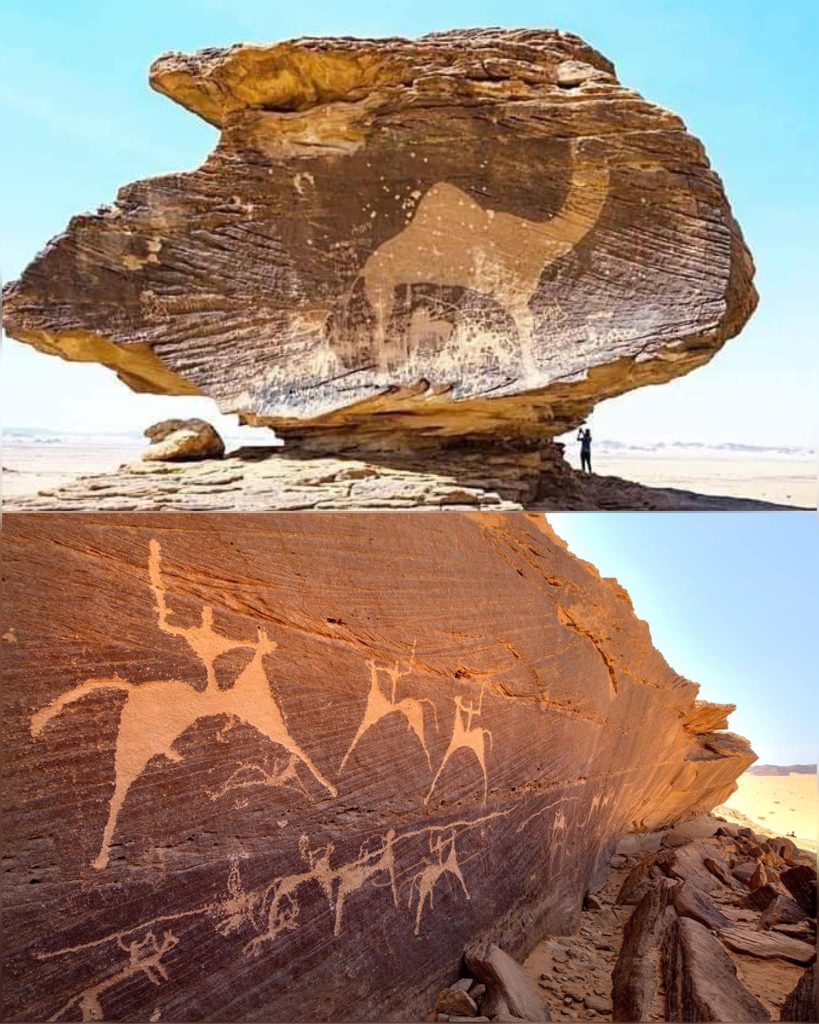In a remarkable achievement for Saudi Arabia’s ongoing efforts to preserve its cultural legacy, the ancient rock art site of Hima, located in the Najran region, has officially been inscribed on the UNESCO World Heritage List. This prestigious acknowledgment establishes Hima as the sixth Saudi site to receive such recognition, underscoring its extraordinary universal value and its importance as a key witness to human history spanning thousands of years. For archaeologists, historians, and cultural enthusiasts alike, this recognition marks not only a victory for preservation but also a fresh opportunity to explore one of the richest and most diverse repositories of ancient human expression in the world.

Hima is situated in the southwestern part of Saudi Arabia, an area historically renowned as a cultural and commercial hub. For millennia, this region served as a strategic crossroads for the movement of people, goods, and ideas. Caravans laden with spices, textiles, and precious metals traveled along ancient trade and pilgrimage routes that traversed Hima, linking the southern Arabian Peninsula with ancient civilizations in Mesopotamia, the Levant, and Egypt. These connections allowed for a vibrant exchange of culture, technology, and belief systems—many traces of which remain etched into the rock faces of Hima, offering a tangible testament to its role in shaping regional and global history.
The rock art of Hima is nothing short of a canvas of human civilization. Its surfaces are adorned with thousands of intricate carvings and inscriptions that span from prehistoric eras through post-historic times. These artworks provide a rare and vivid glimpse into the lives of those who once roamed this region. Among the most captivating depictions are elaborate hunting scenes, showing humans and animals interacting in ways that reveal ancient practices and survival strategies. The diversity of wildlife and plant life portrayed suggests a rich natural environment that once supported robust communities. In addition to these scenes, visitors can find a fascinating array of ancient symbols, tools, and other objects, all meticulously rendered in stone.
One of the most valuable aspects of Hima’s rock art lies in its linguistic and epigraphic heritage. The site hosts thousands of inscriptions written in a variety of ancient scripts, including Musnad, Thamudic, Nabataean, and early Arabic. These inscriptions provide crucial data for linguists and historians, helping to trace the evolution of language, trade, and communication in the Arabian Peninsula. Each script offers insight into the societies that used them and their interaction with neighboring cultures. Such inscriptions are invaluable for understanding the historical progression from early tribal communities to the complex societies that laid the groundwork for the modern Arab world.
Dr. Jasir Alherbish, CEO of the Heritage Commission, eloquently emphasized the site’s global importance, stating, “Hima provides us with unique and invaluable lessons about the evolution of human civilization and life in ancient times.” His statement reflects the growing awareness that Hima’s significance extends far beyond Saudi Arabia’s borders. It is a heritage site of global relevance, one that contributes to our collective understanding of the human journey over the ages.
The Saudi Heritage Commission has undertaken a comprehensive plan to ensure the continued preservation of Hima. This includes implementing protective measures to safeguard the rock art from natural degradation and human interference, as well as promoting further scholarly research to unlock the many stories still hidden within the carvings. Additionally, the commission is committed to increasing both local and international tourism, encouraging visitors from around the world to witness the site’s grandeur firsthand and to experience the profound connection it offers to our shared past.
Hima’s inscription on the UNESCO World Heritage List is closely aligned with Saudi Arabia’s Vision 2030, a national strategy aimed at diversifying the country’s economy and fostering cultural enrichment. A core component of this vision is the preservation and promotion of Saudi Arabia’s vast cultural and natural heritage. The inclusion of Hima under UNESCO’s protection not only supports this national agenda but also serves as a beacon for the global community, emphasizing the importance of cultural conservation in shaping a sustainable and enlightened future.
Saudi Arabia’s efforts in this field extend beyond its own borders. In 2019, the Kingdom demonstrated its commitment to cultural preservation on a global scale by signing a Memorandum of Understanding with UNESCO, including a significant $25 million donation to support the organization’s worldwide heritage initiatives. This act of international cooperation signals Saudi Arabia’s growing role as a leader in global heritage preservation, working alongside other nations to protect and celebrate the legacy of humanity.
As Hima ascends to global recognition, it invites scholars, travelers, and curious minds to engage with the stories engraved in its ancient rocks. It challenges us to appreciate the rich tapestry of human experience, ingenuity, and resilience that has defined our species for millennia. The site stands not only as a cultural treasure for Saudi Arabia but as a vital chapter in the history of human civilization—a reminder that in the echoes of the past, we find inspiration and wisdom for the future.





